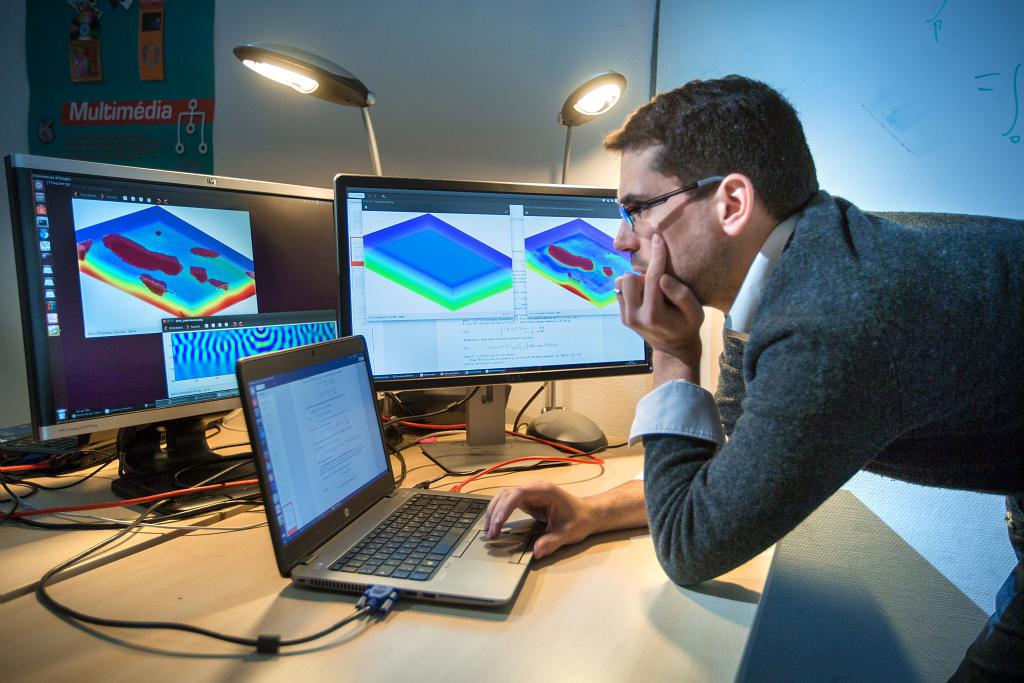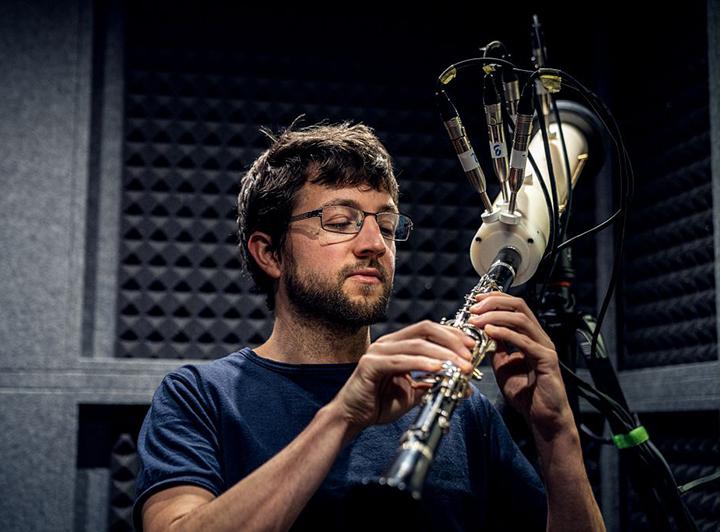
From Magique-3D to Makutu
After 12 years, the Magique-3D project team (advanced modelling in 3D geophysics) bade farewell in 2020. But out of the ashes emerged a new team, Makutu (which is the Maori word for “magician”), picking up where they left off. Indeed, they widened Magique-3D’s research scope, while retaining a focus on simulating wave propagation. To its portfolio of activity in underground imaging (geophysics), the team has added two new, high-potential research fields: imaging the interior of the sun (helioseismology) and analysis of acoustic waves for use in making wind instruments.
“We had started to explore new areas prior to the end of Magique-3D, and we’re delighted to be able to focus on these other fields, which are both different and interlinked”, explains Hélène Barucq, who heads up the Makutu project team. “One thing we all have in common is wave equations, specifically the mathematical and digital models used to simulate wave propagation in different environments - acoustic waves in fluids; waves in solids; or electromagnetic waves, which don’t need any supporting material in order to propagate.”
Probing the depths of the Earth
The project team has long-established expertise in imaging the depths of the Earth, and has often worked in partnership with companies in the energy sector, such as TotalEnergies or Real Time Seismic. This has included characterising reservoirs of natural resources. “As part of Pixil, which was a cross-border project, our imaging and simulation software was used to image potential geothermal reservoirs. It is also recommended that qualitative and quantitative soil surveys be carried out in order to prevent accidents, such as landslides”, explains Hélène Barucq. “We have also worked with TotalEnergies on high-resolution imaging of former reservoirs, the aim being to assess how they have evolved and to determine whether or not they could be used for storage, including of CO2.”
Verbatim
I have a PhD in applied mathematics and I've known Hélène Barucq since the early 2000s. Together we launched a research project in 2007 (DIP - Depth Imaging Partnership), which aimed to explore advanced new digital methods for depth imaging. TotalEnergies funded a number of PhDs on this subject, enabling the discovery of new methods and allowing us to recruit high-quality researchers to work for TotalEnergies’ research and development department. Right now, our primary focus is on wave equations capable of being used for carbon storage and reducing our carbon footprint.
Expert in digital methods and high-performance computing at TotalEnergies
Simulating the interior of the sun
Makutu’s “digital engineers” (all members of the team, most of whom are mathematicians, work on the development of digital simulation codes) have recently begun tackling a new challenge: the sun. “The challenge lies in the fact that there is practically nothing already in place for making simulations”, explains Hélène Barucq. “There is a great deal of work to be done on equations and physics, which will require assistance from specialists.” Fortunately, the researchers will be able to collaborate with physicists from the Max Planck Institute of the Sun, which is based in Göttingen in Germany. But what is their end goal? “The sun is often described as a physics laboratory”, explains Hélène Barucq. “The hope is that our computer codes will be used to develop a better understanding of - or even to predict - complex phenomena such as solar flares, which can disrupt life on Earth at high altitudes or damage communications equipment.”
Predictions on wind instruments
More surprisingly, Juliette Chabassier, who has worked as a research officer within the team since 2013 and who plays the oboe, recently had the idea of expanding upon the digital techniques developed by Makutu in order to offer solutions to makers of wind instruments. “If we are able to see what is happening inside the sun based on surface information, could we not develop a better understanding of musical instruments based on data collected from their ends?” An Inria exploratory project, which was accepted in 2017, confirmed the relevance of the research, and was “allocated funding by the Nouvelle-Aquitaine region to work on the development of a virtual workshop that would give instrument makers the opportunity to use advanced design tools in order to predict the acoustic behaviour of instruments before they are made.”
Six researchers from Makutu are currently working on this, in close collaboration with some renowned specialists. These include Humeau Factory, a manufacturer of wind instruments (chiefly bassoons and baroque oboes) aiming to use the team's technology in order to “develop modern-day replicas of period instruments”; the European Technological Institute for Music Professions, which is seeking to create a specialist platform for manufacturers of stringed instruments; and the Paris Philharmonic’s ‘Cité de la Musique’, which has been working “on a project for digitising certain heritage brass instruments”. All are interested in new technology for acoustic wave simulation, “the goal being to determine the physical characteristics of the instruments they are seeking to reproduce.”
More about
- « Le soleil chante pour Hélène », profile of Hélène Barucq on the popular science blog Binaire on the Le Monde website

